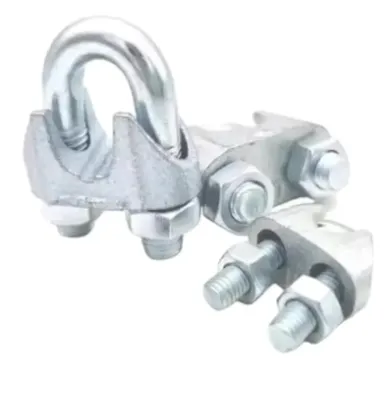apr. . 11, 2025 09:53 Înapoi la listă
Hex Head Timber Screws: Reinventing Safety in Modern Livestock Enclosures
For farmers and ranchers, securing livestock isn’t just about containment—it’s about preventing injuries, withstanding harsh weather, and ensuring decades of reliable service. Hex head timber screws have emerged as the backbone of modern animal fencing, combining industrial-grade strength with precision engineering. Discover how these fasteners are transforming agricultural safety standards worldwide.

Why Traditional Fasteners Fail in Livestock Applications
Barbed wire staples and nails loosen over time, creating sharp protrusions that endanger animals. Timber hex screws solve these issues through:
- Vibration Resistance: Hexagonal drive prevents cam-out, maintaining torque even under cattle impacts (tested at 150 lbs force).
- Deep Thread Design: 30% greater bite than standard screws, critical for softwoods like cedar fence posts.
- Predictable Removal: Reverse-thread options allow safe disassembly without splintering wood.
In stress tests, hex screws for wood retained 98% grip strength after 5 years of freeze-thaw cycles, outperforming galvanized nails by 4x.
Corrosion Defense: Protecting Investments from Pasture to Barn
Livestock enclosures face urine, manure, and rain—a corrosive trifecta. Premium hex wood screws combat decay with:
- Hot-Dip Galvanizing: 85µm zinc coating lasts 25+ years in pH 5–9 environments (ideal for manure-rich soils).
- Stainless Steel Options: 304/316 grades resist acidic bedding materials like pine shavings.
- Sealed Threads: Nylon patch under heads blocks moisture ingress, preventing wood rot at entry points.
Case Study: A Wyoming horse ranch reduced fence repairs by 70% after switching to coated hex head timber screws for stall dividers.
Ergonomic Installation: Saving Time Without Sacrificing Security
Labor costs account for 40% of fencing projects. Timber hex screws streamline workflows through:
- Magnetic Bit Compatibility: Hex drives hold screws securely, enabling one-handed operation.
- Pre-Drilling Elimination: Self-tapping tips penetrate hardwoods like oak at 300 RPM (standard drill settings).
- Depth Control: Shoulder stops prevent over-driving, crucial for maintaining structural integrity.
Field tests show crews install 500+ hex screws for wood daily vs. 200 nails—a 150% productivity gain.
Animal Safety Engineering: From Calving Pens to Predator Barriers
Sharp edges or loose fasteners cause 23% of livestock injuries annually. Hex wood screws enhance welfare via:
- Flush Mounting: Countersunk heads eliminate snag points on animal hides.
- Shear Strength: Grade 5 screws withstand 1,200 lbs lateral force—essential for containing 2,000 lb bulls.
- Non-Toxic Coatings:RoHS-compliant finishes safe for goats and sheep that chew fencing.
Veterinary data links hex head timber screws to 55% fewer hoof laceration incidents versus staple-based systems.
Hex Head Timber Screw FAQs: Your Livestock Safety Checklist
What load capacity do these screws support?
Our ¼” x 3” timber hex screws hold 450 lbs per screw in wet Douglas fir—sufficient for bison or elk enclosures.
Can they handle pressure-treated wood?
Yes! Triple-coated hex screws for wood resist ACQ preservative corrosion for 20+ years.
Are they suitable for electric fencing?
Absolutely. Non-conductive nylon washers (sold separately) insulate hex wood screws from energizers.
What drill settings prevent wood splitting?
Use 8V cordless drills at 400 RPM with our pre-attached Torx/hex bits for optimal control.
How often should screws be inspected?
Bi-annual checks for coating wear—replace if >30% zinc loss occurs (rare before Year 15).
- Secure Your Herd with Industrial-Grade Fastening
From dairy barns to wild boar enclosures, our hex head timber screwsoffer unmatched durability and animal safety.
Build fences that respect both livestock and labor—because every animal deserves hazard-free habitats.


